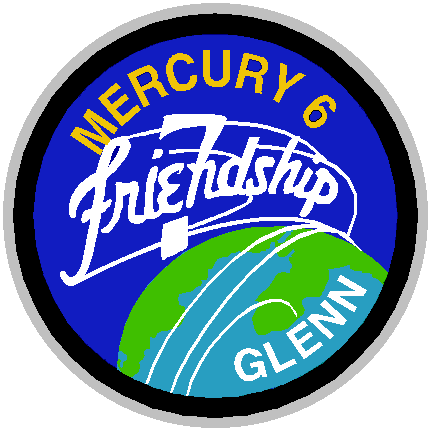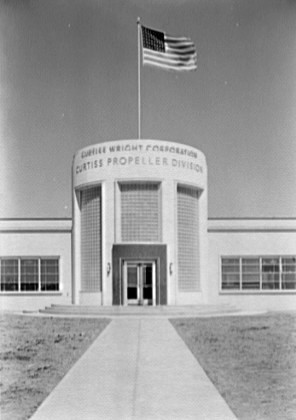|
T. J. O'Malley
Thomas Joseph O'Malley (October 15, 1915 – November 6, 2009) was an Irish-American Aerospace engineering, aerospace engineer who, as chief test conductor for the Convair division of General Dynamics, was responsible for pushing the button on February 20, 1962, launching the Mercury-Atlas 6 space flight carrying astronaut John Glenn, the first American in Geocentric orbit, orbit. Five years later, NASA asked North American Aviation to hire him as director of launch operations to help get the Apollo program back on track after the Apollo 1 Apollo Command/Service Module#Command Module (CM), command module fire on the launch pad killed three astronauts. O'Malley continued to play a leadership role in the United States' space program through the first Space Shuttle launch in 1981. Biography Early life O'Malley was born in 1915 to parents who emigrated from Ireland to Montclair, New Jersey, and he lived there until 1944. In 1936 he earned a Bachelor of Science degree in mechanic ... [...More Info...] [...Related Items...] OR: [Wikipedia] [Google] [Baidu] |
John Glenn
John Herschel Glenn Jr. (July 18, 1921 – December 8, 2016) was an American Marine Corps aviator, astronaut, businessman, and politician. He was the third American in space and the first to orbit the Earth, circling it three times in 1962. Following his retirement from NASA, he served from 1974 to 1999 as a United States Senate, U.S. Senator from Ohio; in 1998, he flew into space again at the age of 77. Before joining NASA, Glenn was a distinguished fighter pilot in World War II, the Operation Beleaguer, Chinese Civil War, and the Korean War. He shot down three MiG-15s and was awarded six Distinguished Flying Cross (United States), Distinguished Flying Crosses and eighteen Air Medals. In 1957, he made the first supersonic transcontinental flight across the United States. His on-board camera took the first continuous, panoramic photograph of the United States. Glenn was one of the Mercury Seven military test pilots selected in 1959 by NASA as the nation's first astron ... [...More Info...] [...Related Items...] OR: [Wikipedia] [Google] [Baidu] |
Apollo 1
Apollo 1, initially designated AS-204, was planned to be the first crewed mission of the Apollo program, the American undertaking to land the first man on the Moon. It was planned to launch on February 21, 1967, as the first low Earth orbital test of the Apollo command and service module. The mission never flew; a cabin fire during a launch rehearsal test at Cape Canaveral Air Force Station Launch Complex 34, Cape Kennedy Air Force Station Launch Complex 34 on January 27 killed all three crew members—Command Pilot Gus Grissom, Senior Pilot Ed White (astronaut), Ed White, and Pilot Roger B. Chaffee—and destroyed the command module (CM). The name Apollo 1, chosen by the crew, was made official by NASA in their honor after the fire. Immediately after the fire, NASA convened an Accident Review Board to determine the cause of the fire, and both chambers of the United States Congress conducted their own United States congressional hearing, committee inquiries to oversee NASA's in ... [...More Info...] [...Related Items...] OR: [Wikipedia] [Google] [Baidu] |
Cape Canaveral Air Force Station Launch Complex 14
Launch Complex 14 (LC-14) is a launch site at Cape Canaveral Space Force Station in Florida. Part of the Missile Row lineup of launch sites in the region, LC-14 was used for various crewed and uncrewed Atlas launches, including the February 1962 ''Friendship 7'' flight aboard which John Glenn became the first American to orbit the Earth. LC-14 is currently leased to Stoke Space for their Nova launch vehicle. History Atlas and Mercury LC-14 was the first Atlas pad in operation and hosted the initial Atlas A and B test flights in 1957-58 It was also the only one of the original four pads to never have a booster explode on it. By 1959, it was decided to convert the pad for Atlas D missile and space launches, and a large service tower was added early in the year. The first Atlas flown from the renovated LC-14 was Missile 7D on May 18; however, a problem with the launcher hold-down arms damaged the missile and caused its explosion shortly after launcThis was traced to improper ... [...More Info...] [...Related Items...] OR: [Wikipedia] [Google] [Baidu] |
Montclair Times
Montclair is a toponym which is French for ''clear mountain''. It may refer to: Places in the United States *Montclair, New Jersey **Montclair Art Museum **Montclair State University **Upper Montclair, New Jersey ** Montclair Public Library * Montclair, California, a city in San Bernardino County * Montclair, Oakland, California, a neighborhood * Montclair, Indiana * Montclair, Lexington, Kentucky * Montclair (Quincy, Massachusetts), a neighborhood in Quincy * Montclair, Cumberland County, North Carolina * Montclair, Davidson County, North Carolina * Montclair, Fayetteville, North Carolina, a neighborhood * Montclair, Onslow County, North Carolina * Montclair, Scotland County, North Carolina * Montclair, Wilson County, North Carolina * Sunset Terrace/Montclair, Houston, a neighborhood in Houston, Texas * Montclair, Virginia Other uses *Mercury Montclair, a line of automobiles made by Ford Motor Company in the 1950s *Montclair bottled water, produced by Nestlé Waters N ... [...More Info...] [...Related Items...] OR: [Wikipedia] [Google] [Baidu] |
Intercontinental Ballistic Missile
An intercontinental ballistic missile (ICBM) is a ballistic missile with a range (aeronautics), range greater than , primarily designed for nuclear weapons delivery (delivering one or more Thermonuclear weapon, thermonuclear warheads). Conventional weapon, Conventional, Chemical weapon, chemical, and Biological agent, biological weapons can also be delivered with varying effectiveness, but have never been deployed on ICBMs. Most modern designs support multiple independently targetable reentry vehicle (MIRVs), allowing a single missile to carry several warheads, each of which can strike a different target. The Nuclear weapons of the United States, United States, Russia and weapons of mass destruction, Russia, China and weapons of mass destruction, China, France and weapons of mass destruction, France, India and weapons of mass destruction, India, the United Kingdom and weapons of mass destruction, United Kingdom, Nuclear weapons and Israel, Israel, and North Korea and weapons of ... [...More Info...] [...Related Items...] OR: [Wikipedia] [Google] [Baidu] |
SM-65 Atlas
The SM-65 Atlas was the first operational intercontinental ballistic missile (ICBM) developed by the United States and the first member of the Atlas rocket family. It was built for the U.S. Air Force by the Convair Division of General Dynamics at an assembly plant located in Kearny Mesa, San Diego. Development dates to 1946, but over the next few years the project underwent several cancellations and re-starts. The deepening of the Cold War and intelligence showing the Soviet Union was working on an ICBM design led to it becoming a crash project in late 1952, along with the creation of several other missile projects to ensure one would enter service as soon as possible. The first test launch was carried out in June 1957, which failed. The first success of the Soviet R-7 Semyorka in August gave the program new urgency, leading to the first successful Atlas A launch in December. Of the eight flights of the A model, only three were successful, but the later models demonstr ... [...More Info...] [...Related Items...] OR: [Wikipedia] [Google] [Baidu] |
Curtiss-Wright
The Curtiss-Wright Corporation is an American manufacturer and services provider headquartered in Davidson, North Carolina, with factories and operations in and outside the United States. Created in 1929 from the consolidation (business), consolidation of Curtiss Aeroplane and Motor Company, Curtiss, Wright Aeronautical, Wright, and various supplier companies, the company was immediately the country's largest aviation firm and built more than 142,000 aircraft engines for the U.S. military during World War II. It no longer makes aircraft but still makes many related components, particularly actuators, Aircraft flight control system, aircraft controls, valves, and it provides surface-treatment services. It supplies equipment to the Aerospace manufacturer, commercial, Manufacturing, industrial, defense industry, defense, and energy markets. It makes parts for nuclear power, commercial and nuclear navy, naval nuclear power systems, industrial vehicles, and petroleum industry, oil- and ... [...More Info...] [...Related Items...] OR: [Wikipedia] [Google] [Baidu] |
Paterson, New Jersey
Paterson ( ) is the largest City (New Jersey), city in and the county seat of Passaic County, New Jersey, Passaic County, in the U.S. state of New Jersey.New Jersey County Map New Jersey Department of State. Accessed July 10, 2017. As of the 2020 United States census, Paterson was List of municipalities in New Jersey, the state's third-most-populous municipality,Table1. New Jersey Counties and Most Populous Cities and Townships: 2020 and 2010 Censuses New Jersey Department of Labor and Workforce Development. Accessed Dec ... [...More Info...] [...Related Items...] OR: [Wikipedia] [Google] [Baidu] |
Wright Aeronautical
Wright Aeronautical (1919–1929) was an American aircraft manufacturer headquartered in Paterson, New Jersey. It was the successor corporation to Wright-Martin. It built aircraft and was a supplier of aircraft engines to other builders in the golden age of aviation. Wright engines were used by Amelia Earhart and Charles Lindbergh. In 1929, the company merged with Curtiss Aeroplane and Motor Corporation to form Curtiss-Wright. History In 1916, the Wright brothers' original aviation firm, the Wright Company, merged with Glenn L. Martin's firm, the Glenn L. Martin Company of California, to form the Wright-Martin Aircraft Corporation. In September 1917, Martin resigned from Wright-Martin and re-formed an independent Glenn L. Martin Company of Ohio (later of Maryland). After World War I in 1919, Wright-Martin was renamed Wright Aeronautical. It moved to Paterson, New Jersey in 1919. In February 1919, an airplane with a Wright engine broke the world's speed record at per hour. ... [...More Info...] [...Related Items...] OR: [Wikipedia] [Google] [Baidu] |
Mechanical Engineering
Mechanical engineering is the study of physical machines and mechanism (engineering), mechanisms that may involve force and movement. It is an engineering branch that combines engineering physics and engineering mathematics, mathematics principles with materials science, to design, analyze, manufacture, and maintain mechanical systems. It is one of the oldest and broadest of the List of engineering branches, engineering branches. Mechanical engineering requires an understanding of core areas including mechanics, Analytical dynamics, dynamics, thermodynamics, materials science, design, structural analysis, and electricity. In addition to these core principles, mechanical engineers use tools such as computer-aided design (CAD), computer-aided manufacturing (CAM), computer-aided engineering (CAE), and product lifecycle management to design and analyze manufacturing plants, industrial equipment and industrial machinery, machinery, HVAC, heating and cooling systems, transport systems, ... [...More Info...] [...Related Items...] OR: [Wikipedia] [Google] [Baidu] |
Bachelor Of Science
A Bachelor of Science (BS, BSc, B.S., B.Sc., SB, or ScB; from the Latin ') is a bachelor's degree that is awarded for programs that generally last three to five years. The first university to admit a student to the degree of Bachelor of Science was the University of London in 1860. In the United States, the Lawrence Scientific School first conferred the degree in 1851, followed by the University of Michigan in 1855. Nathaniel Shaler, who was Harvard's Dean of Sciences, wrote in a private letter that "the degree of Bachelor of Science came to be introduced into our system through the influence of Louis Agassiz, who had much to do in shaping the plans of this School." Whether Bachelor of Science or Bachelor of Arts degrees are awarded in particular subjects varies between universities. For example, an economics student may graduate as a Bachelor of Arts in one university but as a Bachelor of Science in another, and occasionally, both options are offered. Some universities follo ... [...More Info...] [...Related Items...] OR: [Wikipedia] [Google] [Baidu] |









